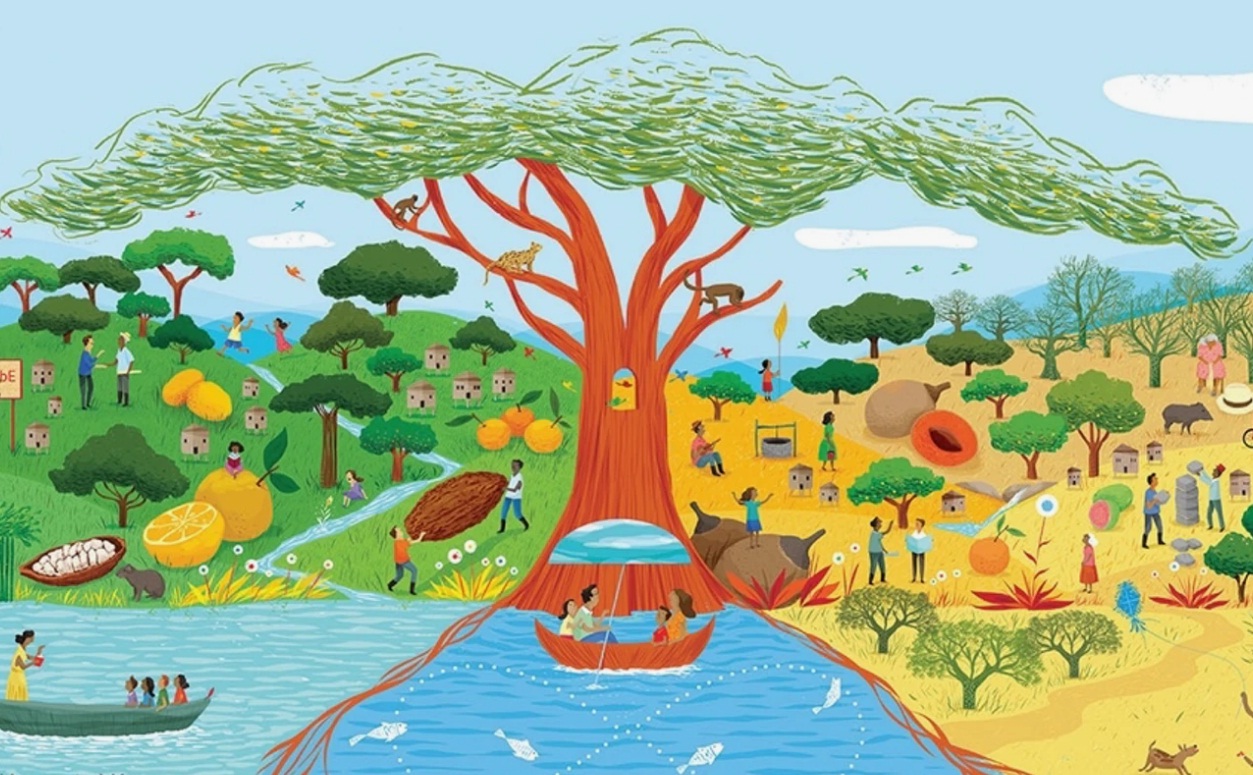
Fuente
We dare to expose a topic to introduce a terminology that will help us to understand environmental systems. We refer to the structural and functional character of Ecosystems. Let's go on to explain it.
The basic territory of life is the ecosystem. This does not mean that some species have a territory that encompasses several ecosystems. The presence of a living being (even if only one), several or abundant living beings as a sine qua non condition, in a place of the Universe, with some physical and chemical conditions, in interrelation between the mentioned elements, defines an Ecosystem..
This limits the existence of Ecosystems to our Mother Earth, because so far there is no life (no evidence) in other celestial bodies or interstellar matter. If we are asked, how many Ecosystems are there on the Moon, the answer is none. And if we are asked, were there ever Ecosystems on the Moon? The answer should be, there is evidence that there were only transiently some ecosystems at the arrival of the astronauts in the Apollo missions to the Moon..
Defining where one Ecosystem begins and another one ends, or vice versa, is quite difficult, it is like when you leave the city, you become less and less city and more countryside. You cannot separate where the city ends and the countryside begins (cities are ecosystems), or vice versa. And that happens with any size ecosystem, even microscopic ones. The transitions between one ecosystem and another are called Ecotones.
The sum of all ecosystems is defined as the Biosphere and is spread throughout our planet and its approximate limits are ten kilometers high in the atmosphere and ten kilometers deep in the seas and oceans. It is well delimited, here there is life, here there is no life, here there is no life, here there is no life..
A set of Ecosystems that have the same soil, the same vegetation and the same climate is called a Biome. By the type of vegetation these Biomes take the name of Forests, Tundra, Desert, Steppes, Aquatic Biomes, etc. The limits of a Biome are circumscribed by the presence of the type of soil and the type of vegetation. But there are transitions, Ecotones, between biomes.
But if a group of ecosystems are within a Geographic Region, such as a Hydrological Basin, and are related to each other as a system, this level of organization is called Bioregion. Its boundary corresponds to the same of the Hydrological Basin, in that case. The concurrence of Bioregions with transition zones, the Ecotone, can also occur.
In biology there is a prefix "syncytium", from the Greek syn meaning together and kyto or citio meaning box, container, several boxes or containers together. In the case of our human body, several cells together without distinction of one from the other because they lack membranes. We have an example in the case of the muscular cellular tissue of the heart. It is also the case of the outermost tissue of the embryo (syncytiotrophoblast). In these tissues, the group of cells in a single mass ends up working as a cell on a larger, larger scale..
If we make analogy to Ecology of the use of the prefix "sincitio", we can consider that the ecosystems behave in a SINCIATIAL way. The Ecotones show that the Ecosystems are not well delimited, they do not have a membrane, a wall, an evident limit that separates it from other ecosystems.
We appreciate then, in this aspect, that the Biosphere, the Biomes and Bioregions, act as a single body, as a single system, with the unlimited conjunction of the Ecosystems, under an expression that we call Syncytioecosystemic..
In conclusion, we can say that the expression syncytioecosystem defines a series of ecosystems that make up a larger system in which we cannot differentiate where one ecosystem ends and another ecosystem begins and that function as a single system. The biome is a syncytioecosystem system. The Bioregion is a syncytioecosystemic system. The Biosphere is a syncytioecosystemic system..

Brilliant explanation of a masterful biology class. It is a pleasure to read such magnificent content!
A great analogy that you present and a great explanation about everything that has to do with this topic.I want to tell you that I have never enjoyed a biology class as much as this before! And I mean it, I'm not kidding.
A very academic and charming publication, which has left me syncytioecosystemictized 😁
Everything in the universe is connected and it is not scandalous to suppose that the ecosystem is also connected, since nature is as mysterious as the brain and the scope of its ramifications is infinite. You reminded me of the movie Avatar, where the great tree was practically the heart of everything and whatever happened to it affected the welfare or calamity of the planet. An interesting theory with which I agree. @tipu curate 2
Upvoted 👌 (Mana: 160/192) Liquid rewards.
Your post has been voted as a part of Encouragement program. Keep up the good work!
Try https://ecency.com and Earn Points in every action (being online, posting, commenting, reblog, vote and more).
Boost your earnings, double reward, double fun! 😉
Support Ecency, in our mission:
Ecency: https://ecency.com/proposals/141
Hivesigner: Vote for Proposal